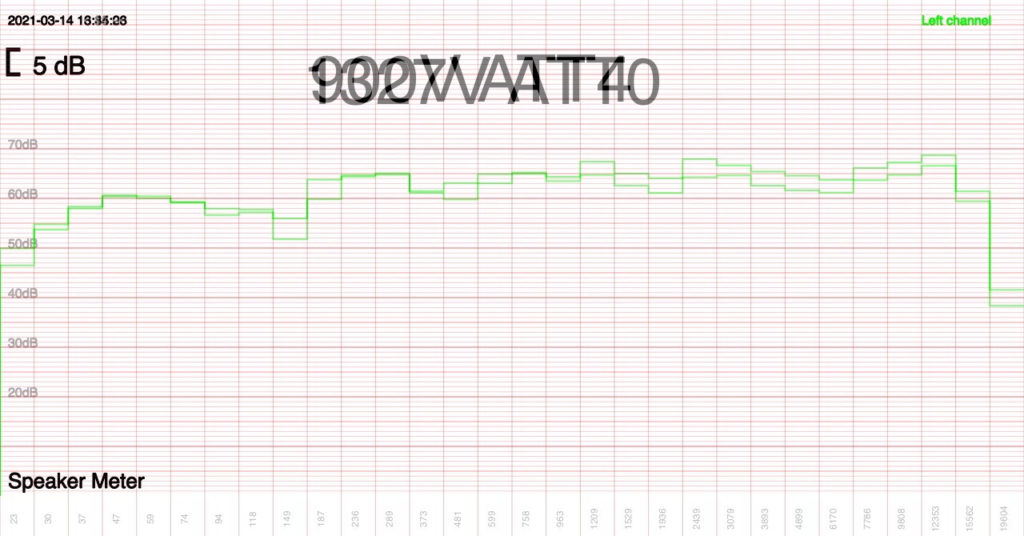By unsoldering high voltage power supplies of cells, you can measure them independently. Contribution of filtering inside audio transformer is not bypassed and is clearly visible here.
Let unplugged for 2 hours before changing configurations. Note that cell discharge as quickly (or slowly) as they charge. So, even an un-powered tied-to-ground cell can still produce sound for some time.





Note 1: very low frequencies (<50Hz) are not accurate due to noisy environment (especially visible on ‘treble cell only’).
Note 2: curves do not add without some scaling. Indeed, by changing loads on EHT, overall output changes as well. But not frequency response of one given cell, only yield.
Here is now one speaker with a defective treble cell: some leakage between 2 central stators (as low as 11kOhm!). Only the treble part lacks in this 3 way speaker (bass/medium/treble). This leakage is due to … arcing ! Note the new curve in this drawing: noise floor (see note 1 above).

How to balance 2 treble cells of a pair of speakers ? To tame one cell of about 2dB, insert a zener diode “220V” in serie with its power supply (ring on the diode towards EHT block). That way:

For standard EHT boards, right pin is second from left.
Here is a comparison with 0/220/440V zener inserted:




“ATT0” vs “ATT4”: -440V, about 3dB (look at higher frequencies only !). Roughly: 20*log10(900/1327)=-3.4dB.
![]()